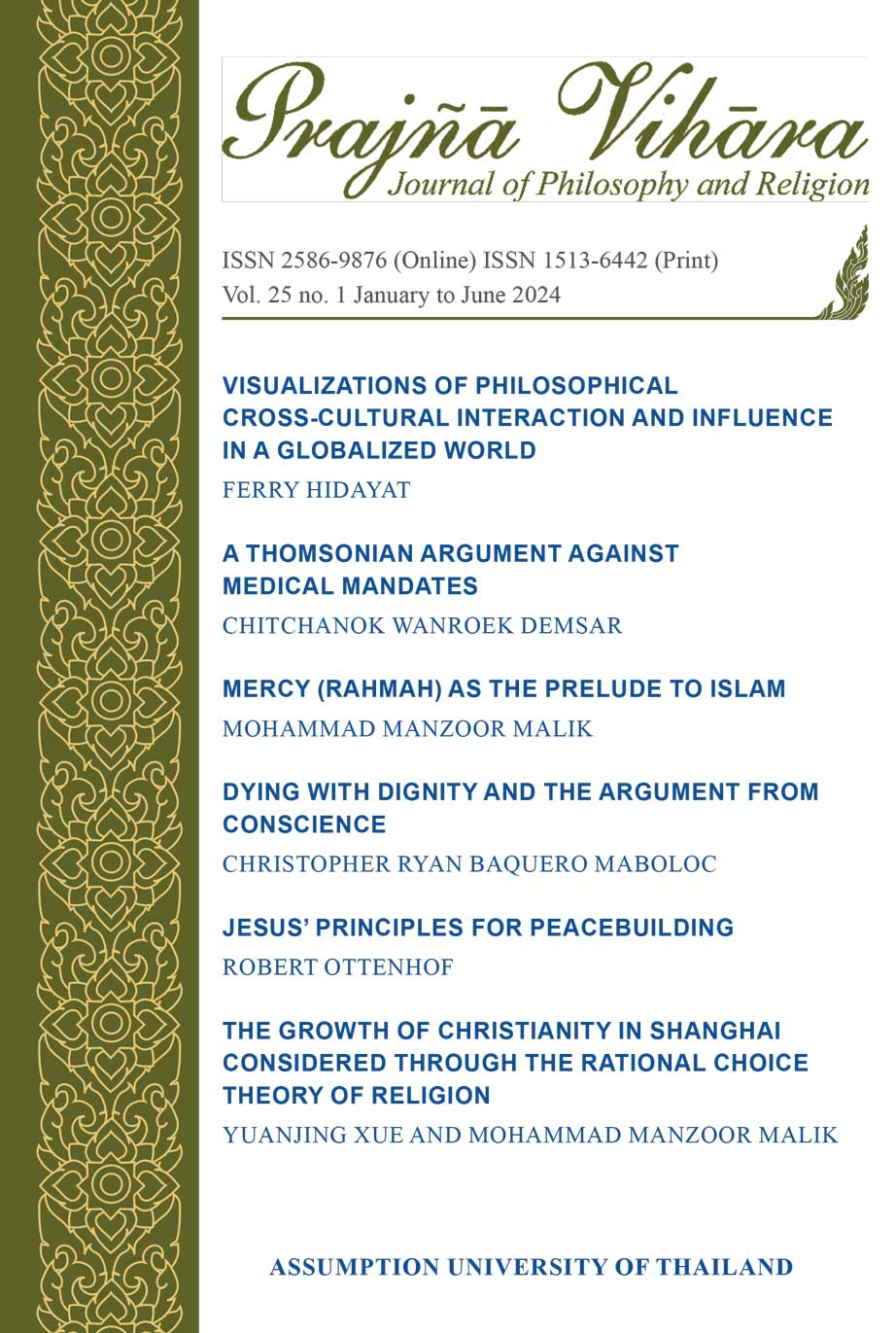MERCY (RAHMAH) AS THE PRELUDE TO ISLAM
DOI:
https://doi.org/10.59865/prajn.2024.3Keywords:
Islam; Quran; Sunnah; Mercy; RahmahAbstract
Mercy is central to the very identity of Islam, yet this is not often recognized by theologians and scholars. This paper will demonstrate that the idea of mercy is important as a prelude to the understanding of Islam and an interpretation of its teachings. This important role of mercy is evident in Islam's primary sources – the Quran and the Sunnah – and is not contingent on political, social, or historical contexts. It is well recognized that the proper comprehension of Islam hinges on grasping the attributes of God, his divine message, and the character of his messenger. But what is often overlooked is that these aspects are fundamentally rooted in mercy. Islam encourages its followers to cultivate merciful virtues. It emphasizes that the compassionate nature of the faith should always precede the understanding and interpretation of its teachings. As a result, Muslims are encouraged to nurture a compassionate self, foster a benevolent mindset and approach, and anchor their religious obedience in the spirit of mercy. While followers of Islam are responsible for upholding this ethos, external observers too should try to view the religion fairly based upon this recognition of the centrality of mercy.
References
Al-Bukhari, Mohammad Isma’il. Sahih Al-Bukhari. Edited by Mohammad Zuhair Al-Nasser. 1st ed. Dar Touq Al-Najat, 2001.
Al-Tirmidhi, Muḥammad Ibn Isa. Sunan Al-Tirmidhi (Al-Jami Al-Kabeer). Edited by Ahmad Mohammad Shakir, Mohammad Fouad Al-Baki, and Ibrahim Autwah Awaz. 2nd ed. Sharikat Maktabatan Wamatbaeat Mustafaa Albabi Alhalabii, 1975.
Abu Daud, Sulayman ibn al-Ashath ibn Isḥaq. Sunan Abi Dawud. Edited by Muhammad Muhyi al-Din Abd al-Hamid. Al-Maktaba Al-Asra. Al-Maktaba Al-Assrya, (n.a).
Downloads
Published
Issue
Section
License
Consent to Publish and Transfer of Copyright
By publishing in Prajñā Vihāra, the author agrees to transfer and assign to Assumption University of Thailand as the Publisher of the Journal, the copyright to the Article in any form, including any and all rights, interests and claims related to it.
The author does retain the following rights:
- The right to make further copies of the published article for their use in classroom teaching.
- The right to reuse all or part of the published article in a compilation of his or her own works or in textbooks of which they are the author or coauthor.
- The right to make copies of the published article for internal distribution within their academic institution.
- All proprietary rights other than copyright, such as patent rights.
- The Article is his or her original work, and has not been published previously and is not under consideration for publication elsewhere.
- It does not contain any matter that is obscene, libelous, or contrary to law.
- They have obtained the necessary license or written authority and paid any and all related fees for the use and reproduction of text, tables, illustrations and other copyrighted work from the owners of the intellectual property rights, and can furnish the Publisher copies of the license/written authority and proof of payment of related fees upon the signing of this Agreement.
- They have the consent of the Co-Authors of the article upon the signing of this Agreement.
- In the event that they intend to republish, reprint or translate all or part of the Article in other publications, they will secure the prior written permission from the journal Editor.
Prajñā Vihāra adopts the Creative Commons Attribution (CC BY-NC-ND) license





